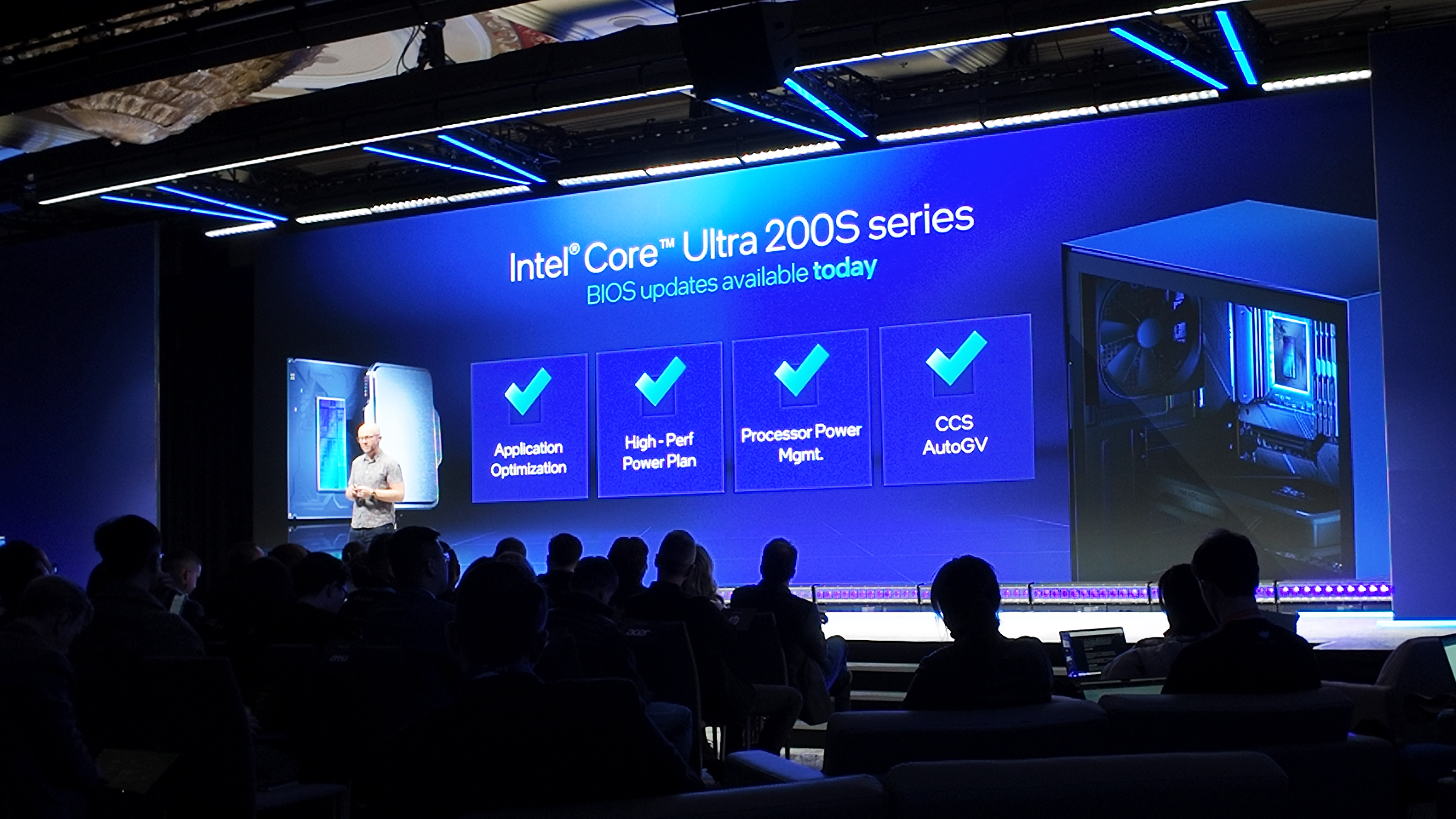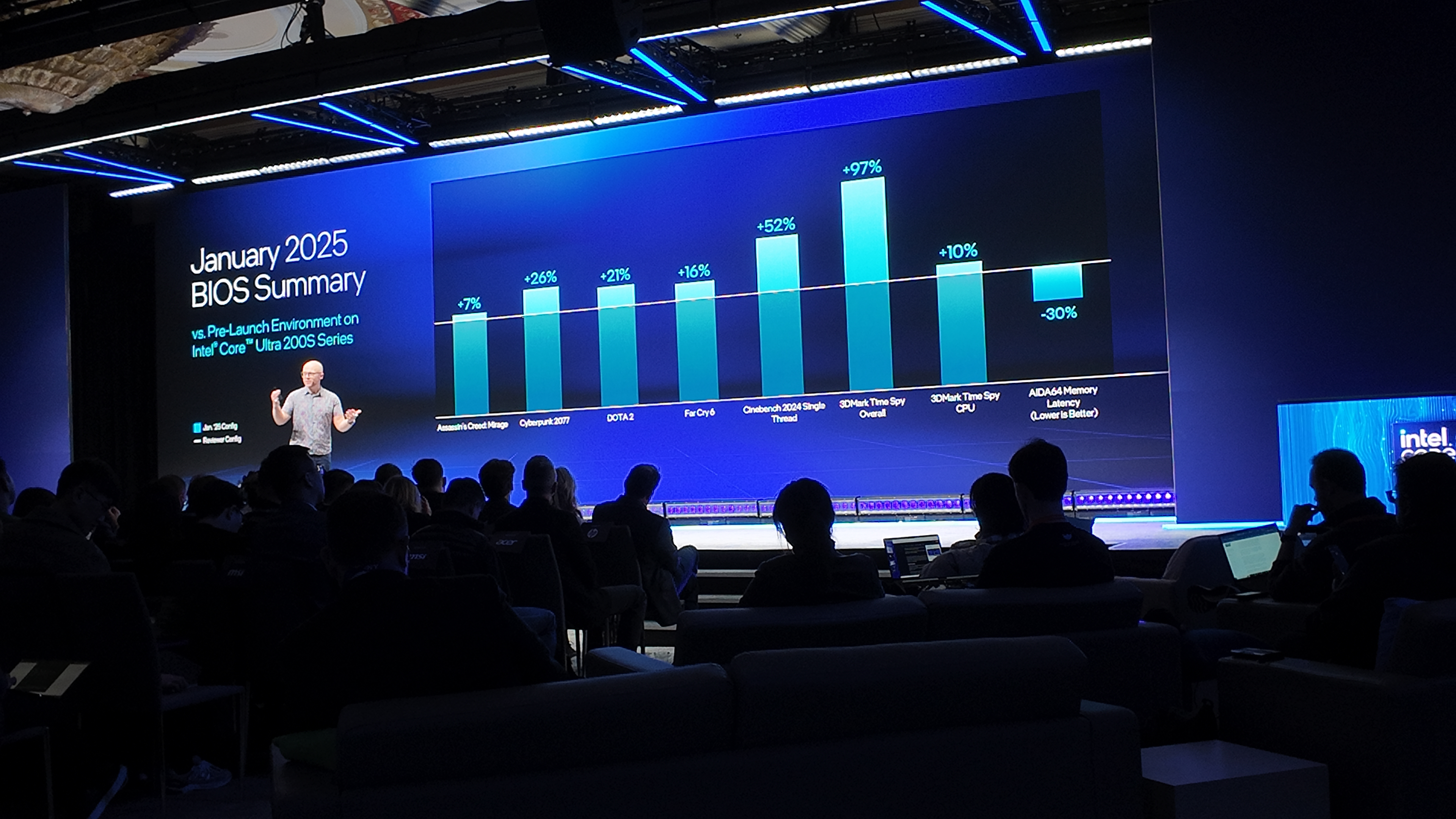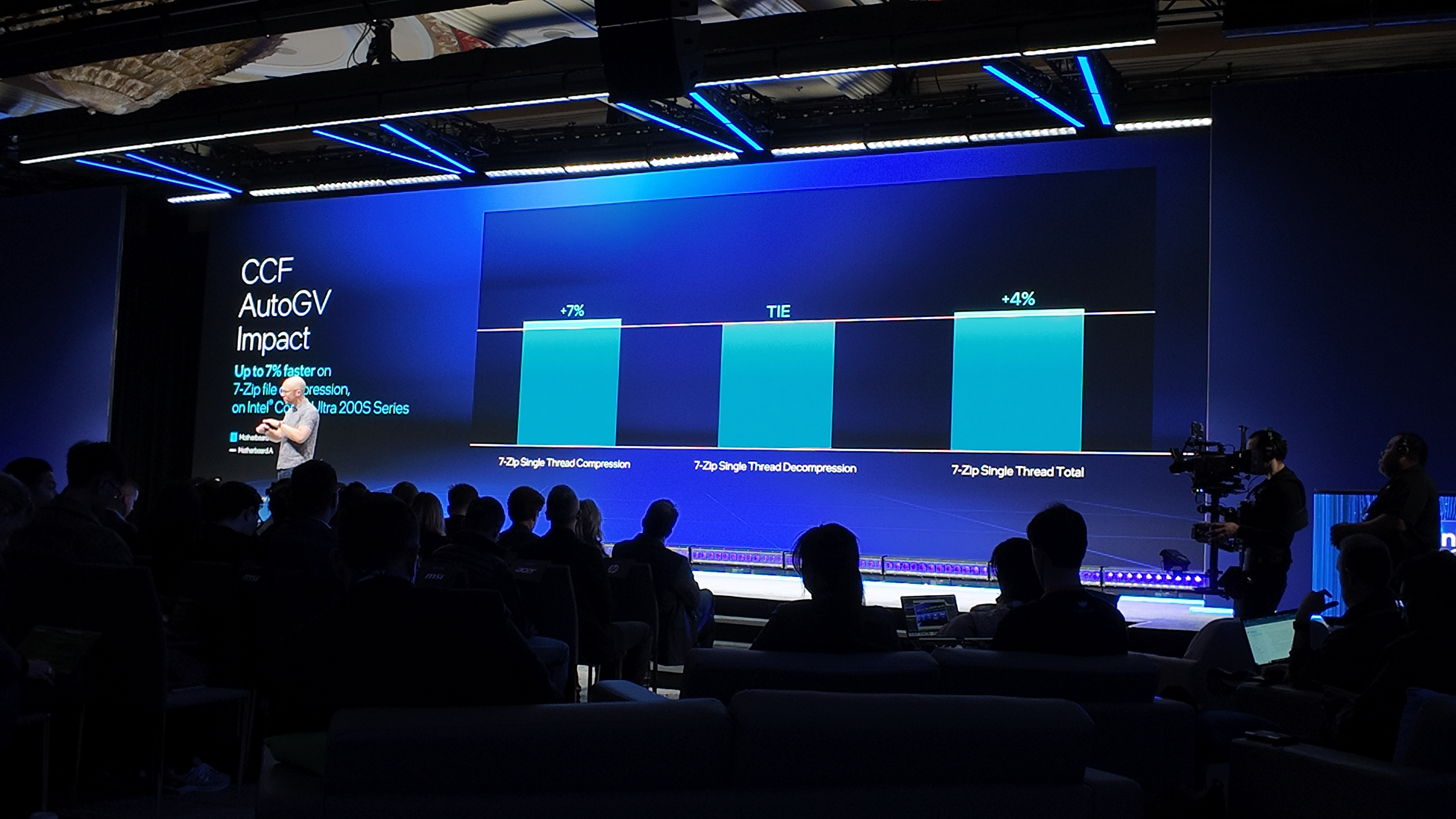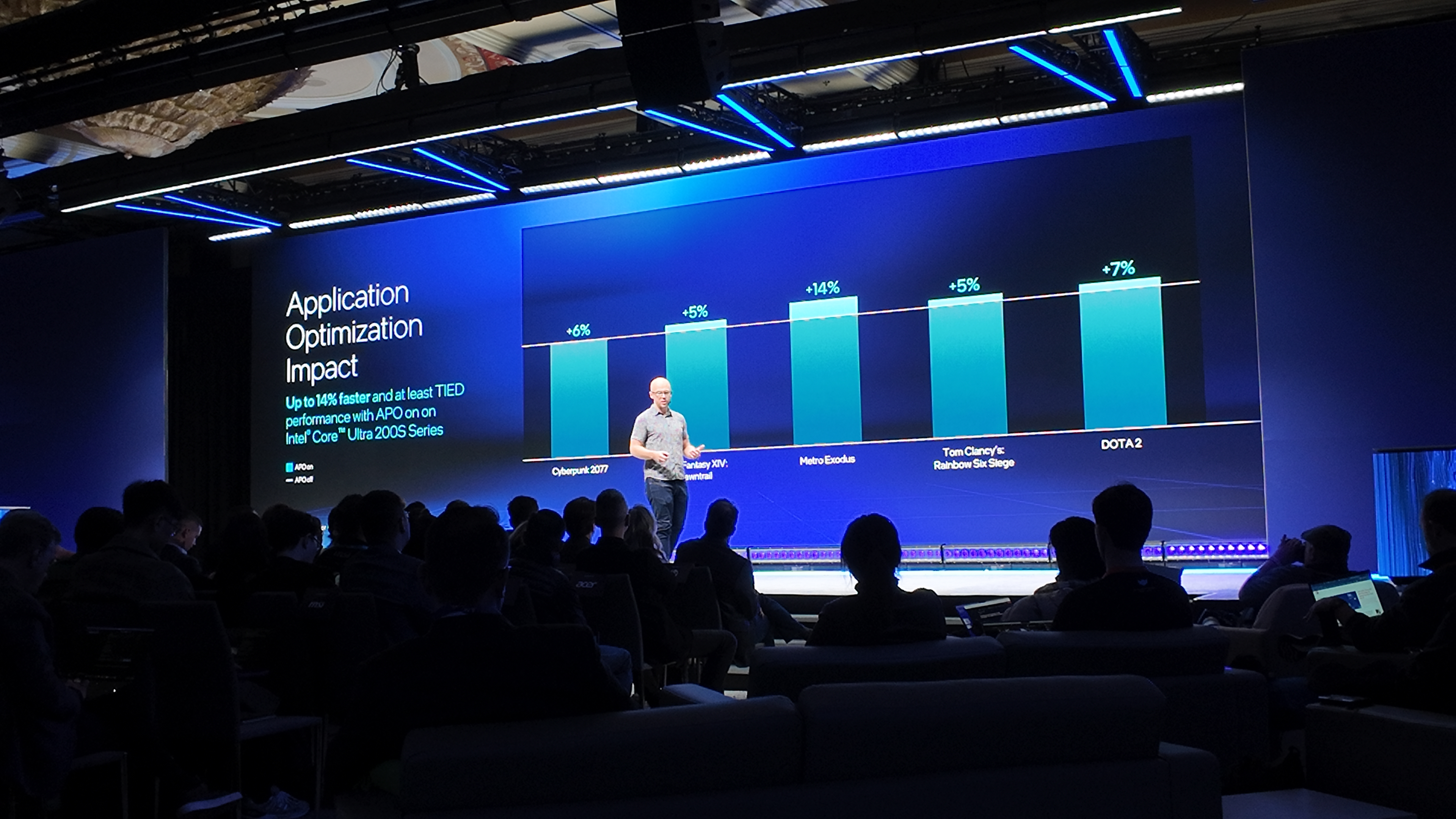Intel unveils second round of updates intended to bring Arrow Lake desktop chips up to expectations: 'our software for the 200S has reached full performance'
Long story short: update your BIOS.

Intel has announced the final wave of updates aimed at its latest 200S Series processors and improving performance for these chips, which faced a rocky start and mixed results.
Intel's VP Client Computing Group and general technical spokesperson, Robert Hallock, has outlined what the second wave of updates (the first came back in November) for Arrow Lake look like over at CES 2025. These updates Intel hopes will shorten the distance between its internal performance expectations and the results seen by reviewers that tested these chips on release, including ourselves.
Hallock began with a general recommendation to turn on its APO, or Application Optimization, tool. This uses various presets to better access the CPU in certain supported games, and since it's not exactly new, let's move onto the fresher announcements.
"We saw some certain motherboards that had some BIOS settings that didn't always convey the best performance, and that was on us."
"For some systems, a feature called AutoGV was inadvertently left on, and that was our mistake. CCF AutoGV controls the frequency at which one CPU core can talk to another, and on Arrow Lake S, that should be 3,800 MHz from one core to the next, not the frequency of the CPU cores themselves, but how quickly they can talk with this feature left on. Sometimes that frequency would go as low as 800 MHz in an effort to save power."
"That power saving makes a lot of sense for a mobile solution, where you might spend most of your time at the desktop, but it doesn't make a lot of sense for a gaming CPU," Hallock continues.

BIOS updates from December onwards rectify this issue, and Hallock says we can expect to see a "pretty healthy uplift" in certain workloads such as file compression and mathematical synthetic workloads.
Keep up to date with the most important stories and the best deals, as picked by the PC Gamer team.
As for the other updates that were previously applied, Intel says with the latest updates that both the 'Best Performance' setting and 'Balanced' setting in Windows power settings will provide the best performance by default. That, apparently, is a key step as Intel found "most users basically just stick with the balance plan by default."


Users on the balanced profile in Windows will see the most gain from the PPM, or performance and power management package, which is the means for controlling frequency ramping, waking up/sleeping specific cores, and how long they sustain maximum boost speeds.
"Any application that is sensitive to memory access or the performance of a small number of CPU threads will get a pretty generous kick from having this PPM system."
The balanced changes and PPM were automatically applied in previous Windows updates, but does outline the importance for anyone rocking an Arrow Lake system to update your Windows install to get the most out of your chip. Though, that said, Windows 24H2 has its own share of problems to work out.
In total, Intel expects a system with all the upgrades in recent weeks and months to make a pretty substantial difference to performance, including by reducing memory latency, which might help gaming performance in some systems.
"Our software for the 200S has reached full performance," Hallock notes.
Though he is also keen to point out that this really depends on the exact specs of a given system, so the exact benefit will vary a lot. Similarly, what we know of these chips and their performance anyways, I wouldn't expect a panacea for performance capable of knocking AMD's X3D chips off their lofty gaming performance perch.
How these updates now combine to boost performance for Arrow Lake, most of all in games, will require rebenchmarking these chips. In our tests over the past few months, we're not convinced we'll see major changes to the performance picture, due to Windows as much as anything else, but it'll all come out in testing.
In the meantime, this is about as good as any reason to keep your system and motherboard BIOS updated.

Jacob earned his first byline writing for his own tech blog, before graduating into breaking things professionally at PCGamesN. Now he's managing editor of the hardware team at PC Gamer, and you'll usually find him testing the latest components or building a gaming PC.


